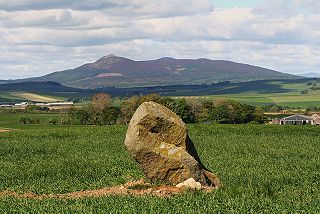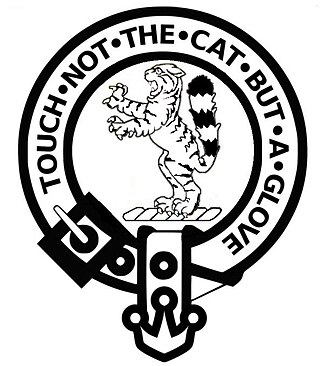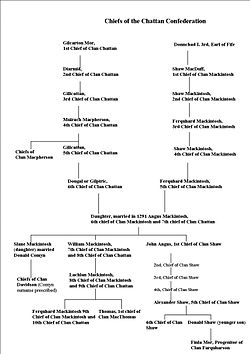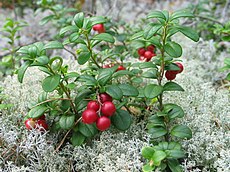
The Battle of Harlaw was a Scottish clan battle fought on 24 July 1411 just north of Inverurie in Aberdeenshire. It was one of a series of battles fought during the Middle Ages between the barons of northeast Scotland and those from the west coast.

Clan Shaw is a Highland Scottish clan and is a member of the Chattan Confederation.

Clan Chattan is a unique confederation of Highland clans. This distinctive allied community comprised at its greatest extent seventeen separate clans, who each had their own clan chief recognized under Scottish law, but were further united and bound to the superior chief of the Confederation for mutual solidarity, sustenance and protection in the Middle Ages and early modern period in the Great Glen and Cairngorms. A tribal coalition of this magnitude was a source of apprehension to both the Lord of the Isles and the Kings of Scots and records exist of machinations to "crying doon the Clan Chattan" by formenting internal dissension.

Clan Mackintosh is a Scottish clan from Inverness in the Scottish Highlands. The chiefs of the clan are the Mackintoshes of Mackintosh. Another branch of the clan, the Mackintoshes of Torcastle, are the chiefs of Clan Chattan, a historic confederation of clans.

Clan Macpherson is a Scottish clan from the Highlands and a member of the Chattan Confederation.

Clan Cameron is a West Highland Scottish clan, with one main branch Lochiel, and numerous cadet branches. The Clan Cameron lands are in Lochaber, and within their lands lies Ben Nevis, the highest mountain in the British Isles. The Chief of the clan is customarily referred to as simply "Lochiel".

Clan MacThomas is a Highland Scottish clan and is a member of the Clan Chattan Confederation.

The Battle of Mulroy was a Scottish clan battle fought in August 1688 in the Lochaber district of Scotland. It was fought between the Clan Mackintosh who were supported by government troops under Kenneth Mackenzie of Suddie against the Clan MacDonald of Keppoch who were supported by the Clan Cameron over disputed lands in the Braes of Lochaber. The battlefield has been inventoried and protected by Historic Scotland under the Scottish Historical Environment Policy of 2009.

Clan MacBean, is a highland Scottish clan and is a member and historic sept of Clan Chattan.

The Battle of the North Inch was a staged battle between the Clan Chattan and the "Clan Quhele" in September 1396. Thirty men were selected to represent each side in front of spectators, including King Robert III of Scotland and his court, on land that is now the North Inch park in Perth, Scotland.

The Battle of Drumlui was a Scottish clan battle that took place in either 1330 or 1337, in the Scottish Highlands between the Clan Cameron and the Clan Mackintosh.

The Battle of Invernahavon was a Scottish clan battle between the Clan Cameron and the confederation of Clan Chattan that consisted of the Clan Mackintosh, Clan Macpherson, and Clan Davidson amongst others. Some sources give the date as 1386, others as 1370.

Clan Cumming, historically known as Clan Comyn, is a Scottish clan from the central Highlands that played a major role in the history of 13th-century Scotland and in the Wars of Scottish Independence. The Clan Comyn was once the most powerful family in 13th-century Scotland, until they were defeated in civil war by their rival to the Scottish throne, Robert the Bruce.

Tor Castle is a ruined castle, about 3 miles north east of Fort William, Highland, Scotland, west of the River Lochy and east of the Caledonian Canal, near Torlundy.
The Battle of Palm Sunday also known as the Massacre of Palm Sunday was a Scottish clan battle that took place in 1429 in the Scottish Highlands between the Clan Cameron and the confederation of Clan Chattan.
The surname Gow is a sept of the Clan Macpherson, a Highland Scottish clan. The Clan Macpherson are in turn a member of the confederation of the Clan Chattan. Within the clan the surname Smith is considered synonymous with that of Gow and this is due to the family's progenitor being either of the surname Smith or of having been of the occupation of Blacksmith. They are known in Scottish Gaelic as the Sliochd an Gobh Cruim which means "the race of the crooked smith".

Clan MacPhail or the Sons of Paul is a Scottish clan of the Scottish Highlands. Known in Scottish Gaelic as Conchie Dhu or Condochy Doye, the clan is mainly associated with the confederation of Clan Chattan.
Malcolm Beg Mackintosh was the tenth chief of the Clan Mackintosh, a Scottish clan of the Scottish Highlands. He was also chief of the confederation of clans known as the Clan Chattan.
Lachlan Mor Mackintosh, 16th of Mackintosh was the chief of the Clan Mackintosh, a Scottish clan of the Scottish Highlands. He was also chief of the confederation of clans that was known as the Clan Chattan.
William Mackintosh, 15th of Mackintosh was the chief of the Clan Mackintosh, a Scottish clan of the Scottish Highlands. He was also chief of the confederation of clans that was known as the Clan Chattan.




















